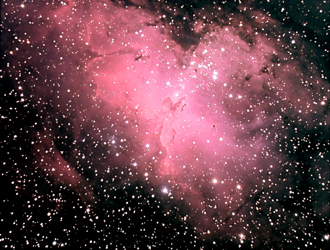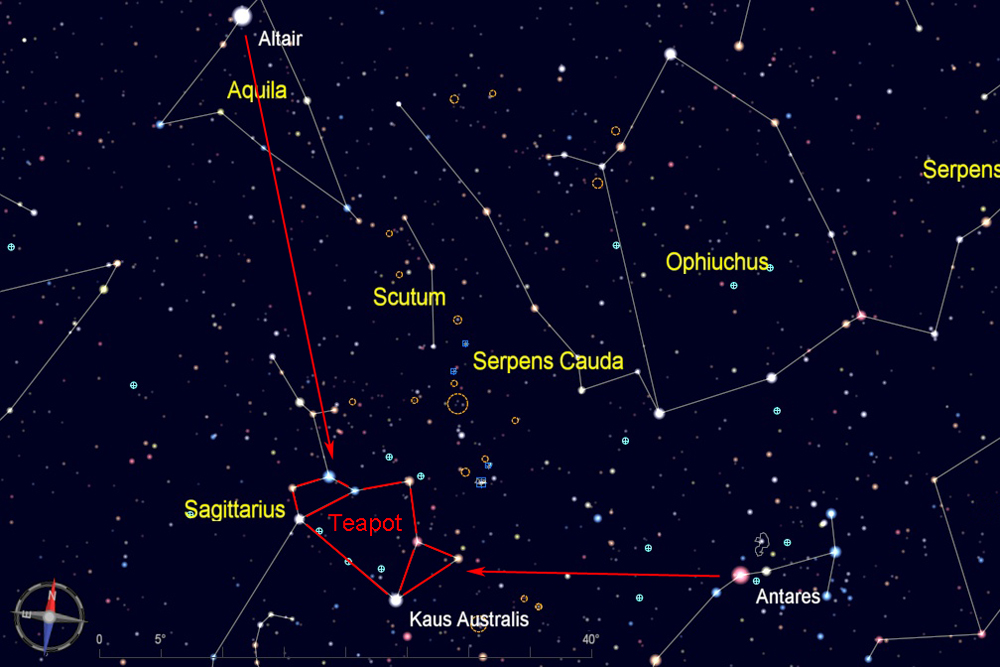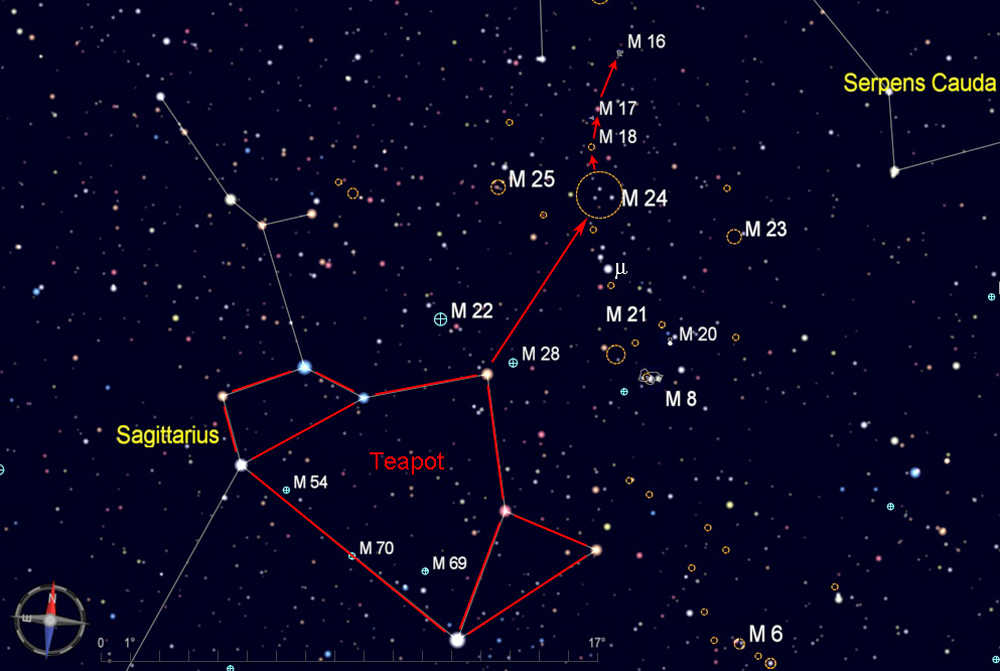| Through most telescopes, M16, the Eagle Nebula, will appear as a cluster of bright stars encompassed by a faint nebula. The details in the nebula shown in photographs are hard to see except with a very large scope. In contrast, the distinctive swan (or check mark) shape of M17 is bright enough to be seen in a good pair of binoculars or through any telescope. M18 is a compact open cluster of a few dozen stars seen against the Milky Way background. |
 |
| Evening visibility: |
July-October |
| Best viewed with: |
binoculars, telescope |
| |
Printable chart (pdf) |
View larger image |
Directions:
From mid-summer to early fall, the distinctive teapot shape of Sagittarius can be seen low in the southern sky during the evening. It is about 50 degrees south of Altair (part of the Summer Triangle) and about 30 degrees east of bright red Antares. It is well worth learning to recognize the teapot, for it can guide you to dozens of beautiful deep-sky objects.
|
 |
| From the star at the top of the Sagittarius teapot asterism, look 7 degrees to the north-northwest with the naked eye, and you should see M24 as a large hazy patch several times the diameter of the Moon, a bright section of the Milky Way. M18, M17, and M16 are roughly in a line to the north. From M24, move about 1.5 degrees to M 18, another 1 degree to M17, then another 2.5 degrees to M16. (If M24 is not visible to the naked eye, you can start instead from μ (Mu) Sagittarii, magnitude 3.8, then move 4 degrees north to reach M18.) |
 |
| Star charts created with Cartes du Ciel |
| |
| |


